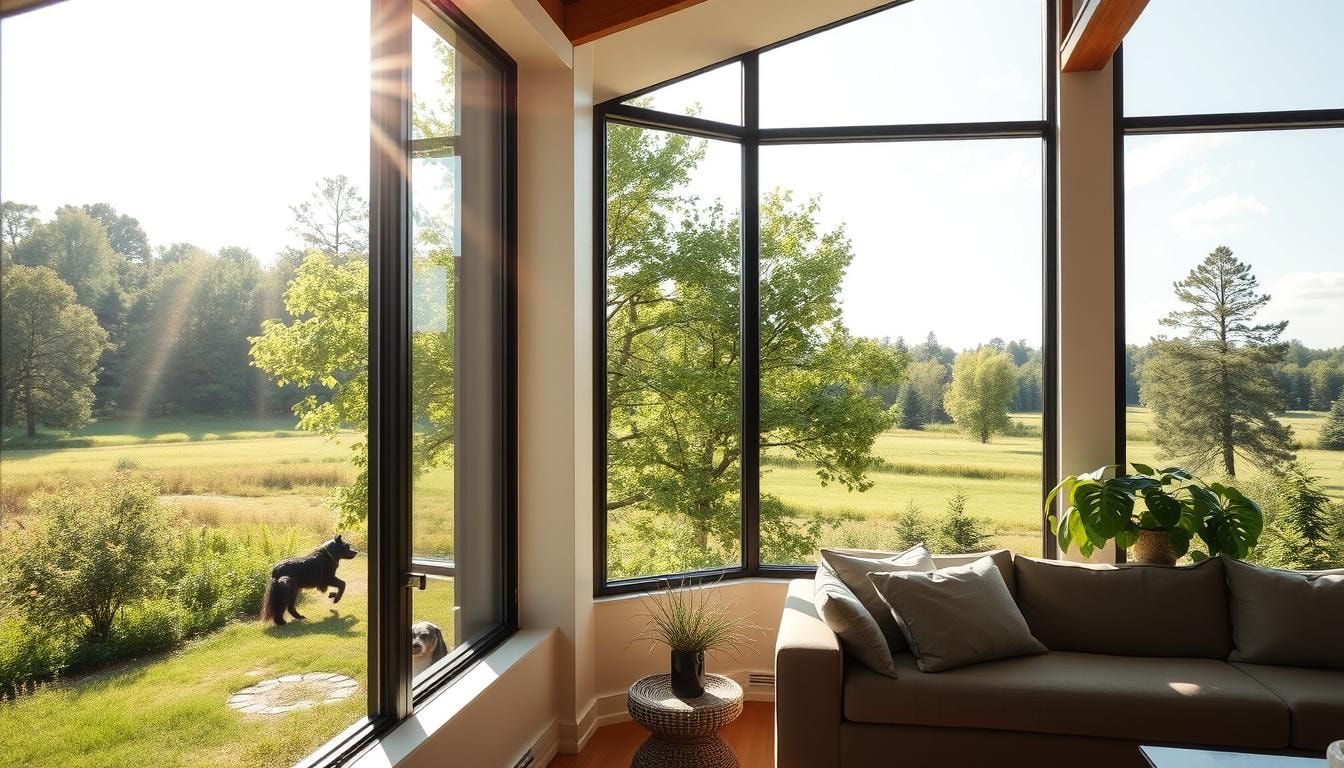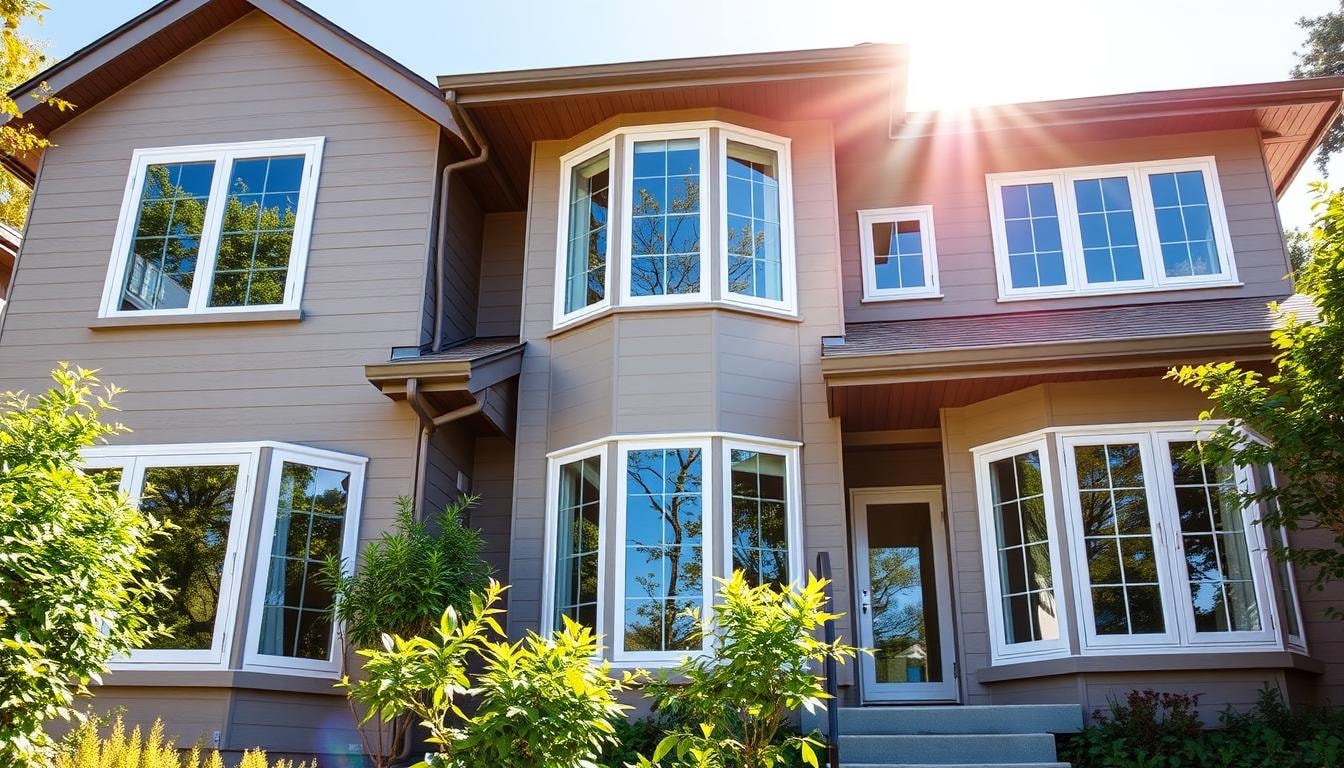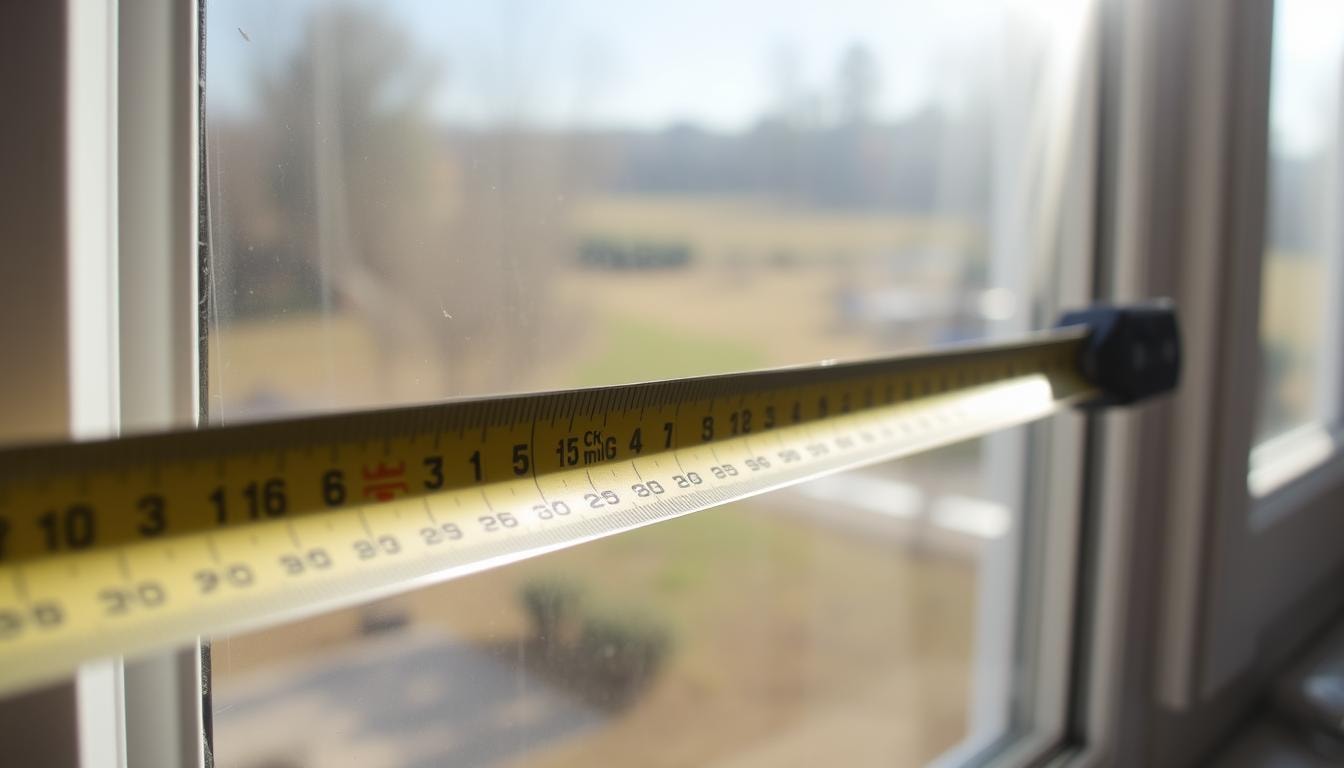
How to Measure Your Windows and Doors for Replacement
Getting the right measurements is key for replacing windows and doors. Wrong sizes can cause drafts, higher energy bills, and a bad fit. This guide will show you how to measure windows and doors correctly. You’ll learn about window and door parts, how to check if they’re square, and how to take precise measurements.
Key Takeaways
- Accurate window and door measurements are essential for a successful replacement project.
- Understanding window and door terminology, such as sash, head, sill, and jambs, is crucial for proper measurement.
- Checking for square alignment, level, and plumb is necessary before taking measurements.
- Measuring the width and height at multiple points is recommended to ensure the smallest accurate measurement.
- Different window and door types require specific measurement techniques to ensure a proper fit.
Understanding Window and Door Anatomy for Accurate Measurements
Getting precise measurements for windows and doors is key when you need to replace old or broken ones. Knowing the parts of window and door frames is vital. This knowledge helps you measure right and talk clearly with installers or makers.
Basic Window Frame Components
A typical window frame has several important parts. These include the head jamb (the top piece), side jambs (the vertical sides), sill (the bottom piece), and the sash (the part that moves with the glass). Knowing these window frame parts is essential for accurate measurements.
Essential Door Frame Elements
Door frames also have key parts that need careful measurement. The main parts are the head jamb, side jambs, and the sill or threshold. Knowing these door frame terms is crucial for a perfect fit when getting new doors.
Terminology for Measurement Points
It’s also important to know common measurement terminology in the window and door replacement world. Terms like “rough opening,” “jamb depth,” and “frame thickness” are key. They help you talk clearly with pros and give the right info for a good install.
Essential Tools and Materials Needed for Measuring
Getting the right measurements for windows and doors is key for a good replacement job. You’ll need some important tools and materials to get it right.
A good tape measure is a must. Choose a 25-foot or longer steel retractable one. It’s best for getting accurate measurements. You’ll also need a notebook and pencil to write down your findings clearly.
- Tape measure
- Notebook
- Pencil
A calculator is handy for quick math checks. It helps make sure your measurements are spot on. A level and square are also useful. They help you check if things are straight and even.
- Calculator
- Level
- Square
Having someone to help you can make things easier. They can hold the tape, check your work, and help write things down.
With this toolkit, you’re ready to take accurate measurements. This will help your window and door replacement go smoothly.
Preparing for the Measurement Process
Before you start measuring your windows and doors, make sure they’re aligned right. First, check if the window or door frame is square. Measure diagonally from corner to corner. If the measurements are off by more than 1/4 inch, it’s not square.
Then, use a level to see if the frame is level and plumb. Make sure it’s straight both ways. If it’s not, your new windows or doors might not fit right.
Clearing the Measurement Area
Getting the area ready for measuring is important. Remove any stuff like curtains, blinds, or furniture. This lets you measure the window opening without any blocks.
By getting the area ready and checking for square, level, and plumb, you’re all set. Taking the time to prepare well will help you choose the right fit. It also saves you from making expensive mistakes.
Measuring Window Width: Step-by-Step Guide
Measuring your windows is key when replacing them. You want the new ones to fit just right. Here’s how to measure your window width correctly.
Taking Multiple Width Measurements
For each window, measure at three spots: top, middle, and bottom. Measure from jamb to jamb, skipping trim or exterior casing. This way, you get the smallest measurement, which is crucial for a good fit.
Recording the Smallest Measurement
After measuring, write down the smallest window width you got. This is the key number for picking new windows. It helps you find a window that fits, even if other measurements are a bit off.
Common Width Measurement Mistakes
- Measuring from trim to trim instead of jamb to jamb
- Assuming all windows in a room are the same window width
- Failing to take multiple measurements and recording the smallest measurement
Staying clear of these mistakes helps you get the right window width measurement. This ensures a perfect fit and easy installation.
Window Height Measurement Techniques
Measuring your windows’ height is key to getting it right. You need to measure at three points: left, middle, and right. This helps catch any changes in the frame over time.
To measure, stand at the sill and stretch your tape from the top of the sill to the bottom of the head jamb. Take three readings and pick the smallest one. This way, you get the most accurate height, even if the frame has moved a bit.
Getting the window height right is vital for a good replacement job. By measuring at three points and choosing the smallest number, you’re sure to get the right size. This ensures your new sill to head jamb fits perfectly, lasting long and making you happy.
Special Considerations for Different Window Types
When you’re replacing windows, knowing about each type is key. This includes double-hung, casement, bay, and bow windows. Each one needs a special way to measure for a perfect fit.
Double-Hung Windows
Double-hung windows need measurements for both the top and bottom parts. Make sure to include the spot where they meet. This ensures they move smoothly and without blockage.
Casement Windows
Casement windows open outwards. So, you must add extra space for them to swing. Measure the frame’s width and height, plus the space needed for full opening.
Bay and Bow Windows
Bay and bow windows have unique shapes. You must measure each part and the angles between them. This detail is crucial for a perfect fit and to keep their look.
Getting the right measurements for different windows is vital. Knowing each type’s needs helps for a smooth installation. You’ll get energy-saving, high-quality windows for your home.
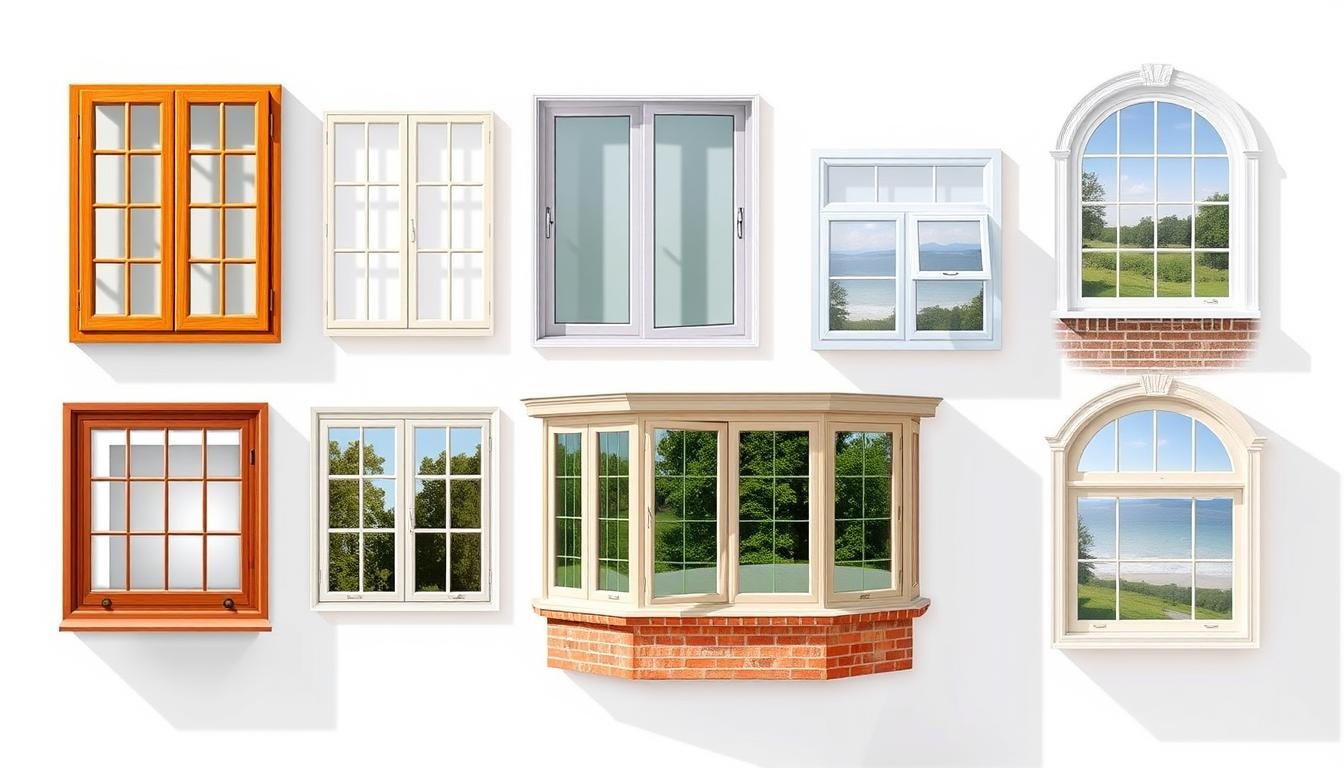
Door Measurement Guidelines
Measuring doors for replacement is like measuring windows. It’s key to measure width and height at several points for a perfect fit. When measuring door width, take readings at the top, middle, and bottom of the opening. For height, measure from the threshold to the head jamb on both sides and in the center.
Think about the door’s swing direction and any special hardware, like handles or hinges. Getting the door measurements right is vital. Wrong measurements can cause problems like oversized or undersized doors. These issues can be expensive and risky.
- Measure the door frame width at the top, middle, and bottom, rounding up to the nearest inch for accuracy.
- Measure the door frame height from the threshold to the head jamb on both sides and in the center.
- Consider the door swing direction and any special hardware when determining the appropriate door size.
- Use professional assistance if needed to ensure precise door measurements and a successful door replacement.
Getting door measurements right is crucial for a good door replacement. By following these steps and thinking about all the important details, you can get a door that fits perfectly. This will help you avoid any expensive problems later on.
Understanding Jamb Depth and Frame Thickness
When you replace windows or doors, knowing the jamb depth and frame thickness is key. The jamb depth is how far from the inside of the frame to the outside. You need to measure it right for a good fit.
Measuring Jamb Depth
To measure the jamb depth, take several measurements along the frame. The thickness can change. Window jamb depths usually range from 3 1/4 to 5 1/4 inches. Door jamb depths are from 4 to 6 inches.
Make sure your measurements fit these ranges. Or, you might need custom options for different depths.
Frame Requirements
- Window frames need the right depth for the jamb and window unit.
- Door frames must fit the jamb and door thickness for a strong and secure fit.
- Vinyl window jamb extensions are durable and keep moisture out.
- Window jamb liners give a new surface for windows without replacing the whole frame.
Getting the jamb depth and frame thickness right is crucial for a smooth and energy-saving window or door replacement. Talking to pros like Precision Doors & Window can help. They ensure your measurements are right and your new windows or doors fit perfectly.
Common Measurement Mistakes to Avoid
Getting window and door measurements right is key for a good replacement job. Even DIY experts can make mistakes that cost a lot. Stay away from these errors to get a perfect fit and easy installation.
One big mistake is measuring from trim to trim instead of jamb to jamb. This can make your measurements wrong, leading to gaps and bad seals. Always measure the width and height of the opening itself, not the trim around it.
- Not measuring width and height in several spots can make openings not square. This causes fit and seal problems.
- Not considering the window or door frame can make installation hard. It might cause gaps or structural issues if the frame is not square.
- Forgetting about obstructions like handles, locks, and window treatments can mess up measurements and fit.
Another mistake is thinking all windows or doors in a home are the same size. Each one needs its own measurement for a good fit. Also, remember that exterior walls like siding, stucco, or brick can change measurements and the installation process.
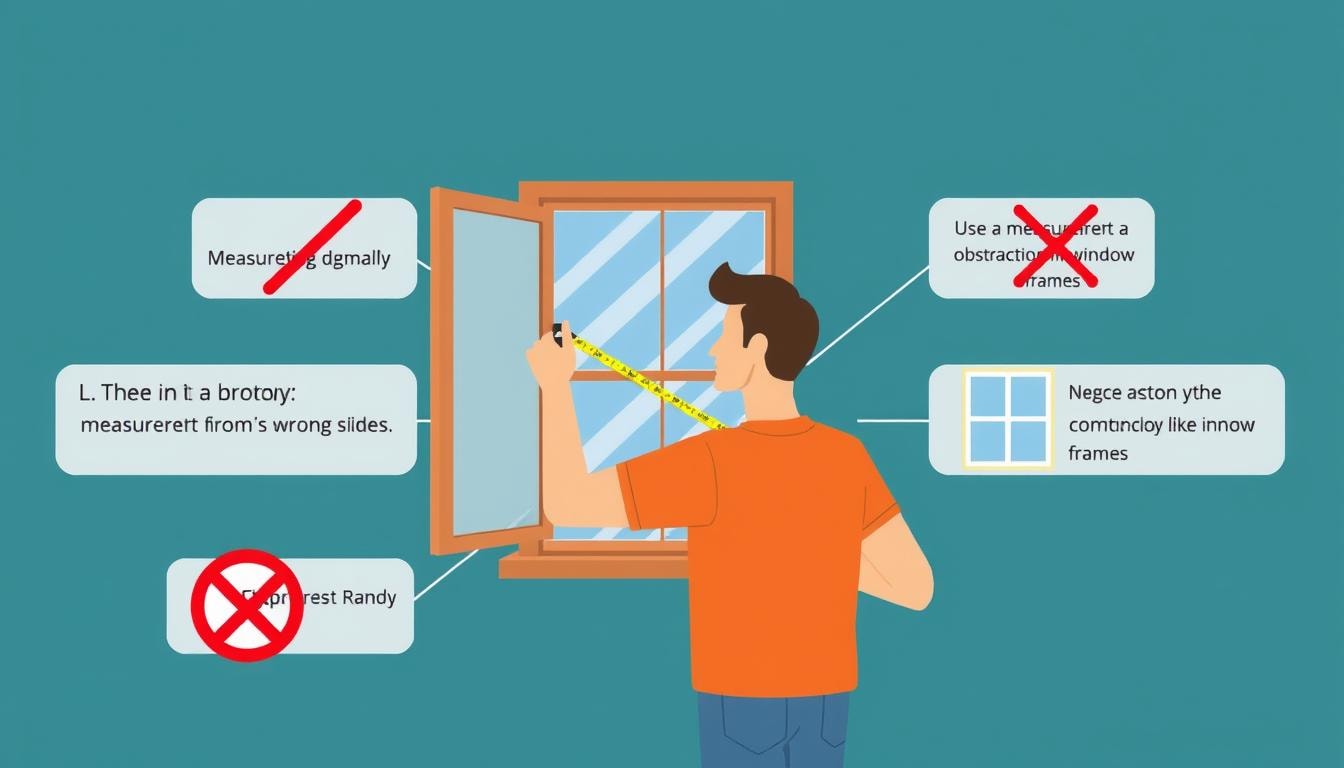
To avoid these mistakes, use a good steel measuring tape. You might also want to get help from a pro for exact measurements. Taking the time to measure each opening right can save you from expensive errors and make the replacement process smooth.
Contact Our Experts at Budget Windows
If your existing frame is outdated or your old windows are drafty, it’s time for a replacement. The experts at Budget Windows can help you find the perfect new windows or doors for your home. Whether you have an awning window, center window, or any other style, we’ll ensure the entire window or door opening is measured accurately.
Our team will take three measurements for both the width and height, as well as the window depth, to get the exact size you need. We’ll even double check the left side, inside edge, and where the head meets the vertical piece to guarantee a perfect, energy-efficient fit. With our expert tips, you’ll have new construction windows or doors that seamlessly fit the existing opening. Contact us today to get started on upgrading your home with the shortest measurement and best solutions.
Conclusion
Getting accurate measurements is key for a good window and door replacement. While you can try to measure yourself, getting help from pros is better. They catch things you might miss.
Right measurements mean your new windows and doors fit perfectly. This makes your home more comfortable and energy-efficient.
If you’re not sure about measuring, ask for expert help. They know how to get it right. This ensures your new windows and doors work their best.
Choosing the right measurements and working with experts can change your home. It makes it look better, saves energy, and adds value. Spend time getting it right, and you’ll have a smooth project.
FAQs
How do I measure the existing window frame for a replacement window?
Measure the width and height of the existing window frame at multiple points – top, middle, and bottom. This ensures you get the smallest, most accurate measurements for a perfect fit.
What should I do if my existing window frame is not square?
Check the frame diagonally to see if it is square. If the measurements differ by more than 1/4 inch, the frame is not square. You’ll need to address this before taking measurements to ensure the new window fits properly.
How do I measure the height of a window for replacement?
Measure the window height at the left, middle, and right side, from the top of the sill to the bottom of the head jamb. Record the smallest of the three height measurements.
Do I need to consider the depth of the existing window frame when replacing windows?
Yes, measure the jamb depth at several points, as it can vary. Window jambs are typically 3 1/4 to 5 1/4 inches deep. Ensure the new window frame will fit the existing jamb depth.
What are some common mistakes to avoid when measuring for replacement windows?
Avoid measuring from trim to trim instead of jamb to jamb, assuming all windows are the same size, and forgetting to consider obstructions like handles or window treatments. Take the time to measure each opening accurately.





